Iraq economic revival faces headwinds
10 May 2024

The ambitious new $17bn Iraq Development Road project, linking Basra to Turkiye’s Mersin port, puts the country’s economic trajectory on a long-term geopolitical setting that will aim to take full advantage of Iraq’s position as a key link in trade routes between Asia and the Mediterranean.
But before this vaunted plan takes root, Prime Minister Shia Al Sudani’s government faces a host of knotty economic challenges, not least a challenging fiscal position aggravated by the expansionary budget announced in 2023.
Lack of parliamentary consent has largely insulated the country from the negative impacts of that $153bn budget. That has meant large amounts of planned state spending have not been disbursed, leaving the state finances in better shape than they would have been otherwise.
Fitch Ratings expects that low execution of capital spending and limited transfers to the Kurdistan region will help limit the size of the deficit.
“We expect growth to rebound in 2024 (1.2%), driven by public spending under the expansionary three-year budget and continued recovery in non-oil GDP. We expect non-oil growth to benefit from stronger private consumption, as inflation edges down,” says Mohamed Afifi, Fitch Ratings’ primary analyst for Iraq.
Budget deficit
Even so, reduced oil revenues have impacted Iraq’s economy, turning a budget surplus of 10.8% of GDP in 2022 into a deficit of 1.9% of GDP in 2023. Fitch sees the fiscal deficit widening, reaching 3.7% in 2024 as declining oil prices and Opec-imposed production cuts drive oil revenue down, while a heavier wage bill pushes expenditure.
The government’s debt-to-GDP ratio is also likely to rise in 2024-25, from 43.4% in 2023 to 48.7%, with Fitch attributing this to larger budget deficits that will be funded from borrowing and deposit drawdowns. However, these figures include some $40bn of legacy debt that Iraq faces no pressure to service.
The big concern is that the 2023-25 budget programme will add hundreds of thousands of workers to an already bloated public sector payroll, crowding out the private sector.
“We estimate that the expansionary three-year budget will hinder the private sector’s development by providing a sharp increase in the public workforce,” says Afifi.
“We estimate that the budget will add 600,000 employees, most of which are currently working under temporary contracts, to the public sector payroll. This would bring the public sector wage bill (salaries and pensions) to 25.8% of GDP by 2025, from 15% in 2022.”
As the IMF warned in a March 2024 commentary, higher economic growth will be needed to absorb the rapidly expanding labour force, boost non-oil exports and broaden the tax base.
In this context, urged the Fund, the Iraqi authorities should seek to enable private sector development, including through labour market reforms, modernisation of the financial sector and restructuring of state-owned banks, pension and electricity sector reforms, and continued efforts to improve governance and reduce corruption.
That is a hefty checklist for a country that is still facing myriad security, political and developmental challenges.
Al Sudani can at least counter the gloomier prognoses with the revival in non-oil sector growth, and lower inflation. Real non-oil GDP is estimated to have grown by 6% in 2023. Headline inflation declined from a high of 7.5% in January 2023 to 4% by year-end, reflecting lower international food and energy prices, and the impact of the February 2023 currency revaluation, according to the IMF.
International reserves increased to $112bn in 2023. Fitch sees FX reserves providing payment coverage above 12 months and a substantial financial buffer until the end of 2025.
Other positives will come through increased foreign direct investment, notably from the Gulf states. Saudi Arabia’s Public Investment Fund allocated $3bn for Iraqi investments last year, while Qatar’s Estithmar signed a series of memorandums of understanding worth $7bn in June 2023, covering hotel, real estate and healthcare projects.
Banking reform
One area of focus for the government is its banking sector, which remains underdeveloped and largely unfit for purpose, dominated by state-owned banks with opaque finances.
As Aysegul Ozgur, head of research at Iraq-focused Rabee Securities, says, 93.7% of currency issued was outside banks in Iraq at the end of 2022.
But, says Ozgur, the Central Bank of Iraq (CBI) is looking to strengthen financial inclusion and increase the cash inside the financial system through a series of projects.
“The salary domiciliation project of 2017 is the most prominent one among them, aiming for public sector employees to transfer their salaries to bank accounts by enabling them to receive and withdraw salaries easily through available payment channels (bank branches, ATMs and POS) and providing the ability to obtain credit facilities and bank loans by showing their salaries as collateral,” she says.
A number of other developments underscore the CBI’s concerted efforts to modernise Iraq’s financial landscape and promote economic stability.
“As a measure to control the FX flow into the banking system, the CBI now allows a limited number of banks to participate in the CBI foreign currency window and engage in US dollar transactions,” says Ozgur. “Due to the restricted number of banks permitted to engage in such activities, they benefit from an expanded market share in US dollar transactions.”
The Central Bank has also moved towards tougher oversight of the country’s 61 commercial banking institutions, made up of 54 private banks and seven state banks.
Since the CBI revised the guidelines for foreign currency transactions across borders to curb illicit financial flows in February 2023, says Ozgur, the banks that have direct correspondent banking relationships have played an active role in international money transfers and increased their commission and FX income significantly.
“The outstanding growth in current account deposits with these transfers resulted in significant growth in assets. Bank of Baghdad, National Bank of Iraq and Al-Mansour Bank are among the banks benefiting the most from these developments due to having direct correspondent banking relationships,” says Ozgur.
In February 2024, eight local commercial banks were banned from engaging in US dollar transactions, in a move to reduce fraud, money laundering and other illegal uses of the greenback. This followed a visit to Baghdad by a senior US Treasury official to Baghdad.
Such moves should, over time, help restore confidence in the financial system and – crucially – help build local insinuations that are credible players in the local economy, able to facilitate Iraq’s private sector growth ambitions, whether domestically or as part of the Iraq Development Road projects.
Exclusive from Meed
-
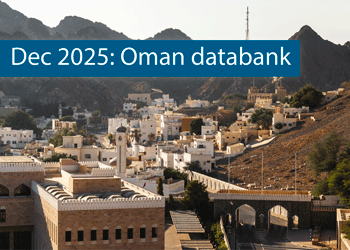 Oman’s growth forecast points upwards
Oman’s growth forecast points upwards24 December 2025
-
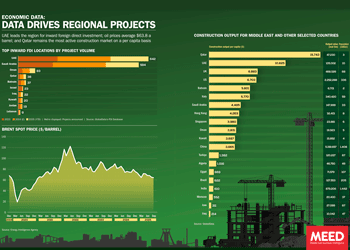 December 2025: Data drives regional projects
December 2025: Data drives regional projects23 December 2025
-
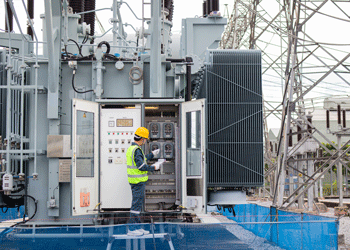 Local firm bids lowest for Kuwait substation deal
Local firm bids lowest for Kuwait substation deal22 December 2025
-
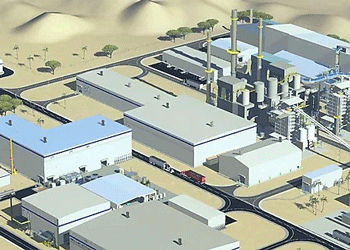 Saudi-Dutch JV awards ‘supercentre’ metals reclamation project
Saudi-Dutch JV awards ‘supercentre’ metals reclamation project22 December 2025
-
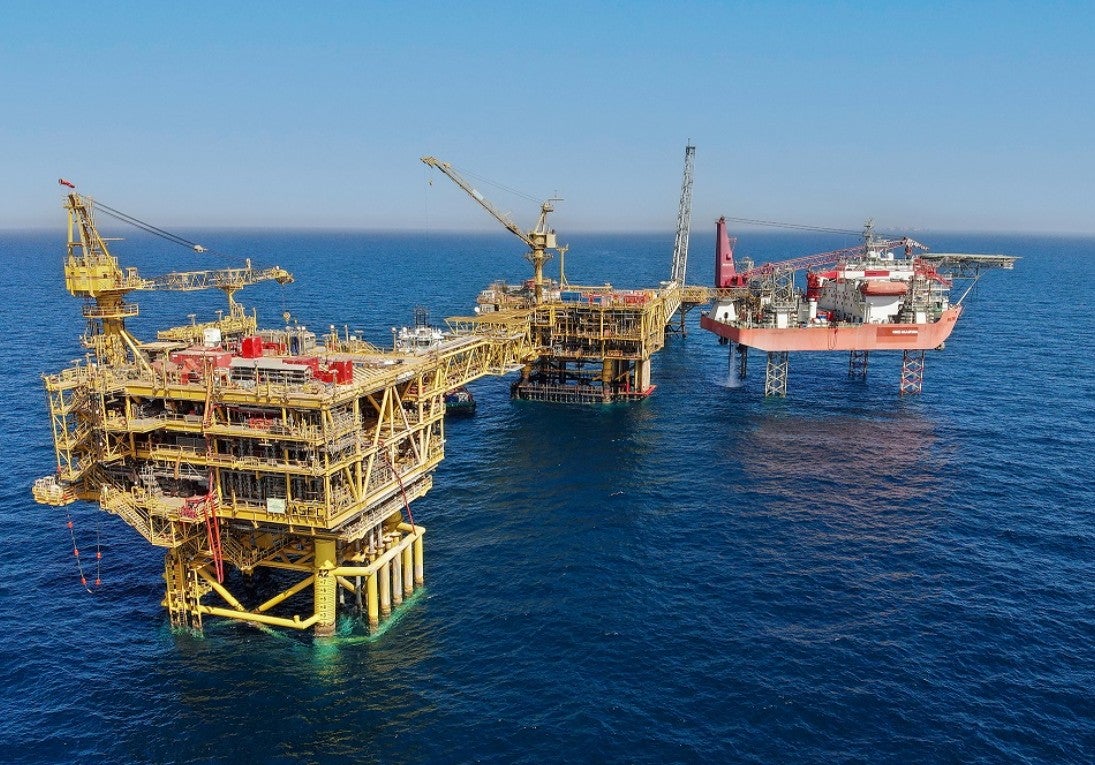 QatarEnergy LNG awards $4bn gas project package
QatarEnergy LNG awards $4bn gas project package22 December 2025
All of this is only 1% of what MEED.com has to offer
Subscribe now and unlock all the 153,671 articles on MEED.com
- All the latest news, data, and market intelligence across MENA at your fingerprints
- First-hand updates and inside information on projects, clients and competitors that matter to you
- 20 years' archive of information, data, and news for you to access at your convenience
- Strategize to succeed and minimise risks with timely analysis of current and future market trends

Related Articles
-
 Oman’s growth forecast points upwards
Oman’s growth forecast points upwards24 December 2025

MEED’s January 2026 report on Oman includes:
> COMMENT: Oman steadies growth with strategic restraint
> GVT & ECONOMY: Oman pursues diversification amid regional concerns
> BANKING: Oman banks feel impact of stronger economy
> OIL & GAS: LNG goals galvanise Oman’s oil and gas sector
> POWER & WATER: Oman prepares for a wave of IPP awards
> CONSTRUCTION: Momentum builds in construction sectorTo see previous issues of MEED Business Review, please click herehttps://image.digitalinsightresearch.in/uploads/NewsArticle/15306449/main.gif -
 December 2025: Data drives regional projects
December 2025: Data drives regional projects23 December 2025
Click here to download the PDF
Includes: Top inward FDI locations by project volume | Brent spot price | Construction output
MEED’s January 2026 report on Oman includes:
> COMMENT: Oman steadies growth with strategic restraint
> ECONOMY: Oman pursues diversification amid regional concerns
> BANKING: Oman banks feel impact of stronger economy
> OIL & GAS: LNG goals galvanise Oman’s oil and gas sector
> POWER & WATER: Oman prepares for a wave of IPP awards
> CONSTRUCTION: Momentum builds in construction sectorTo see previous issues of MEED Business Review, please click herehttps://image.digitalinsightresearch.in/uploads/NewsArticle/15306140/main.gif -
 Local firm bids lowest for Kuwait substation deal
Local firm bids lowest for Kuwait substation deal22 December 2025
The local Al-Ahleia Switchgear Company has submitted the lowest price of KD33.9m ($110.3m) for a contract to build a 400/132/11 kV substation at the South Surra township for Kuwait’s Public Authority for Housing Welfare (PAHW).
The bid was marginally lower than the two other offers of KD35.1m and KD35.5m submitted respectively by Saudi Arabia’s National Contracting Company (NCC) and India’s Larsen & Toubro.
PAHW is expected to take about three months to evaluate the prices before selecting the successful contractor.
The project is one of several transmission and distribution projects either out to bid or recently awarded by Kuwait’s main affordable housing client.
This year alone, it has awarded two contracts worth more than $100m for cable works at its 1Z, 2Z, 3Z and 4Z 400kV substations at Al-Istiqlal City, and two deals totalling just under $280m for the construction of seven 132/11kV substations in the same township.
Most recently, it has tendered two contracts to build seven 132/11kV main substations at its affordable housing project, west of Kuwait City. The bid deadline for the two deals covering the MS-01 through to MS-08 substations is 8 January.
https://image.digitalinsightresearch.in/uploads/NewsArticle/15305745/main.gif -
 Saudi-Dutch JV awards ‘supercentre’ metals reclamation project
Saudi-Dutch JV awards ‘supercentre’ metals reclamation project22 December 2025
The local Advanced Circular Materials Company (ACMC), a joint venture of the Netherlands-based Shell & AMG Recycling BV (SARBV) and local firm United Company for Industry (UCI), has awarded the engineering, procurement and construction (EPC) contract for the first phase of its $500m-plus metals reclamation complex in Jubail.
The contract, estimated to be worth in excess of $200m, was won by China TianChen Engineering Corporation (TCC), a subsidiary of China National Chemical Engineering Company (CNCEC), following the issue of the tender in July 2024.
Under the terms of the deal, TCC will process gasification ash generated at Saudi Aramco’s Jizan refining complex on the Red Sea coast to produce battery-grade vanadium oxide and vanadium electrolyte for vanadium redox flow batteries. AMG will provide the licensed technology required for the production process.
The works are the first of four planned phases at the catalyst and gasification ash recycling ‘Supercentre’, which is located at the PlasChem Park in Jubail Industrial City 2 alongside the Sadara integrated refining and petrochemical complex.
Phase 2 will expand the facility to process spent catalysts from heavy oil upgrading facilities to produce ferrovanadium for the steel industry and/or additional battery-grade vanadium oxide.
Phase 3 involves installing a manufacturing facility for residue-upgrading catalysts.
In the fourth phase, a vanadium electrolyte production plant will be developed.
The developers expect a total reduction of 3.6 million metric tonnes of carbon dioxide emissions a year when the four phases of the project are commissioned.
SARBV first announced its intention to build a metal reclamation and catalyst manufacturing facility in Saudi Arabia in November 2019. The kingdom’s Ministry of Investment, then known as the Saudi Arabian General Investment Authority (Sagia), supported the project.
In July 2022, SARBV and UCI signed the agreement to formalise their joint venture and build the proposed facility.
The project has received support from Saudi Aramco’s Namaat industrial investment programme. Aramco, at the time, also signed an agreement with the joint venture to offtake vanadium-bearing gasification ash from its Jizan refining complex.
Photo credit: SARBV
https://image.digitalinsightresearch.in/uploads/NewsArticle/15305326/main.gif -
 QatarEnergy LNG awards $4bn gas project package
QatarEnergy LNG awards $4bn gas project package22 December 2025
QatarEnergy LNG, a subsidiary of state-owned QatarEnergy, has awarded the main engineering, procurement, construction and installation (EPCI) contract for a major package for the second phase of its North Field Production Sustainability (NFPS) project.A consortium comprising the Italian contractor Saipem and state-owned China Offshore Oil Engineering Company (COOEC) has secured the EPCI contract for the COMP5 package. The contract value is $4bn, with Saipem declaring its share to be worth $3.1bn.
Milan-headquartered Saipem said the contract will run for about five years. The scope of work comprises engineering, procurement, fabrication and installation of two compression complexes, each including a compression platform, a living quarters platform, a flare platform supporting the gas combustion system, and the related interconnecting bridges. Each complex will have a total weight of about 68,000 tonnes.
Offshore installation operations will be carried out by Saipem’s De He construction vessel in 2029 and 2030.
MEED previously reported that the following contractors submitted bids for the NFPS phase two COMP5 package:
- Larsen & Toubro Energy Hydrocarbon (India)
- McDermott (US)
- Saipem/China Offshore Oil Engineering Company (Italy/China)
QatarEnergy LNG, formerly Qatargas, is said to have issued the tender for the NFPS phase two COMP5 package in the first quarter of the year.
Contractors submitted technical bids for the COMP5 package in late June, while commercial bids were submitted by 8 October, as per sources.
Based upon initial evaluation of bids by QatarEnergy LNG, L&TEH has emerged as the lowest bidder for the COMP5 package, followed by McDermott, with the consortium of Saipem and COOEC in third place, MEED reported in late October.
In the weeks following that, the project operator is said to have engaged all bidders for a final round of negotiations, during which the consortium of Saipem and COOEC is believed to have “clinched the deal”, according to sources.
The detailed scope of work on the COMP5 package covers the EPCI work on the following:
- Two gas compression platforms, each weighing 30,000-35,000 tonnes, plus jacket
- Two living quarters platforms, plus jacket
- Two gas flare platforms, plus jacket
- Brownfield modification work at two complexes
NFPS scheme
QatarEnergy’s North Field liquefied natural gas (LNG) expansion programme requires the state enterprise to pump large volumes of gas from the North Field offshore reserve to feed the three phases of the estimated $40bn-plus programme.
QatarEnergy has already invested billions of dollars in engineering, procurement and construction works on the two phases of the NFPS project, which aims to maintain steady gas feedstock for the North Field LNG expansion phases.
The second NFPS phase will mainly involve building gas compression facilities to sustain and gradually increase gas production from Qatar’s offshore North Field gas reserve over the long term.
Saipem has been the most successful contractor on the second NFPS phase, securing work worth a total of $8.5bn.
QatarEnergy LNG awarded Saipem a $4.5bn order in October 2022 to build and install gas compression facilities. The main scope of work on the package, which is known as EPCI 2, covers two large gas compression complexes that will comprise decks, jackets, topsides, interconnecting bridges, flare platforms, living quarters and interface modules.
The gas compression complexes – CP65 and CP75 – will weigh 62,000 tonnes and 63,000 tonnes, respectively, and will be the largest fixed steel jacket compression platforms ever built.
Following that, Saipem won combined packages COMP3A and COMP3B of the NFPS project’s second phase in September last year.
The scope of work on the combined packages encompasses the EPCI of a total of six platforms, approximately 100 kilometres (km) of corrosion resistance alloy rigid subsea pipelines of 28-inches and 24-inches diameter, 100km of subsea composite cables, 150km of fibre optic cables and several other subsea units.
Separately, QatarEnergy LNG awarded McDermott the contract for the NFPS second phase package known as EPCI 1, or COMP1, in July 2023. The scope of work on the estimated $1bn-plus contract is to install a subsea gas pipeline network at the North Field gas development.
In March this year, India’s Larsen & Toubro Energy Hydrocarbon (LTEH) won the main contract for the combined 4A and 4B package, which is the fourth package of the second phase of the NFPS project and is estimated to be valued at $4bn-$5bn.
The main scope of work on the package is the EPCI of two large gas compression systems that will be known as CP8S and CP4N, each weighing 25,000-35,000 tonnes. The contract scope also includes compression platforms, flare gas platforms and other associated structures.
LTHE sub-contracted detailed engineering and design works on the combined 4A and 4B package to French contractor Technip Energies.
NFPS first phase
Saipem is also executing the EPCI works on the entire first phase of the NFPS project, which consists of two main packages.
Through the first phase of the NFPS scheme, QatarEnergy LNG aims to increase the early gas field production capacity of the North Field offshore development to 110 million tonnes a year.
QatarEnergy LNG awarded Saipem the contract for the EPCI package in February 2021. The package is the larger of the two NFPS phase one packages and has a value of $1.7bn.
Saipem’s scope of work on the EPCI package encompasses building several offshore facilities for extracting and transporting natural gas, including platforms, supporting and connecting structures, subsea cables and anti-corrosion internally clad pipelines.
The scope of work also includes decommissioning a pipeline and other significant modifications to existing offshore facilities.
In addition, in April 2021, QatarEnergy LNG awarded Saipem two options for additional work within the EPCI package, worth about $350m.
QatarEnergy LNG awarded Saipem the second package of the NFPS phase one project, estimated to be worth $1bn, in March 2021.
Saipem’s scope of work on the package, which is known as EPCL, mainly covers installing three offshore export trunklines running almost 300km from their respective offshore platforms to the QatarEnergy LNG north and south plants located in Ras Laffan Industrial City.
Saipem performed the front-end engineering and design work on the main production package of the first phase of the NFPS as part of a $20m contract that it was awarded in January 2019. This provided a competitive advantage to the Italian contractor in its bid to win the package.
https://image.digitalinsightresearch.in/uploads/NewsArticle/15305330/main2239.jpg

 Al Sudani struggles to maintain Iraq’s political stability
Al Sudani struggles to maintain Iraq’s political stability